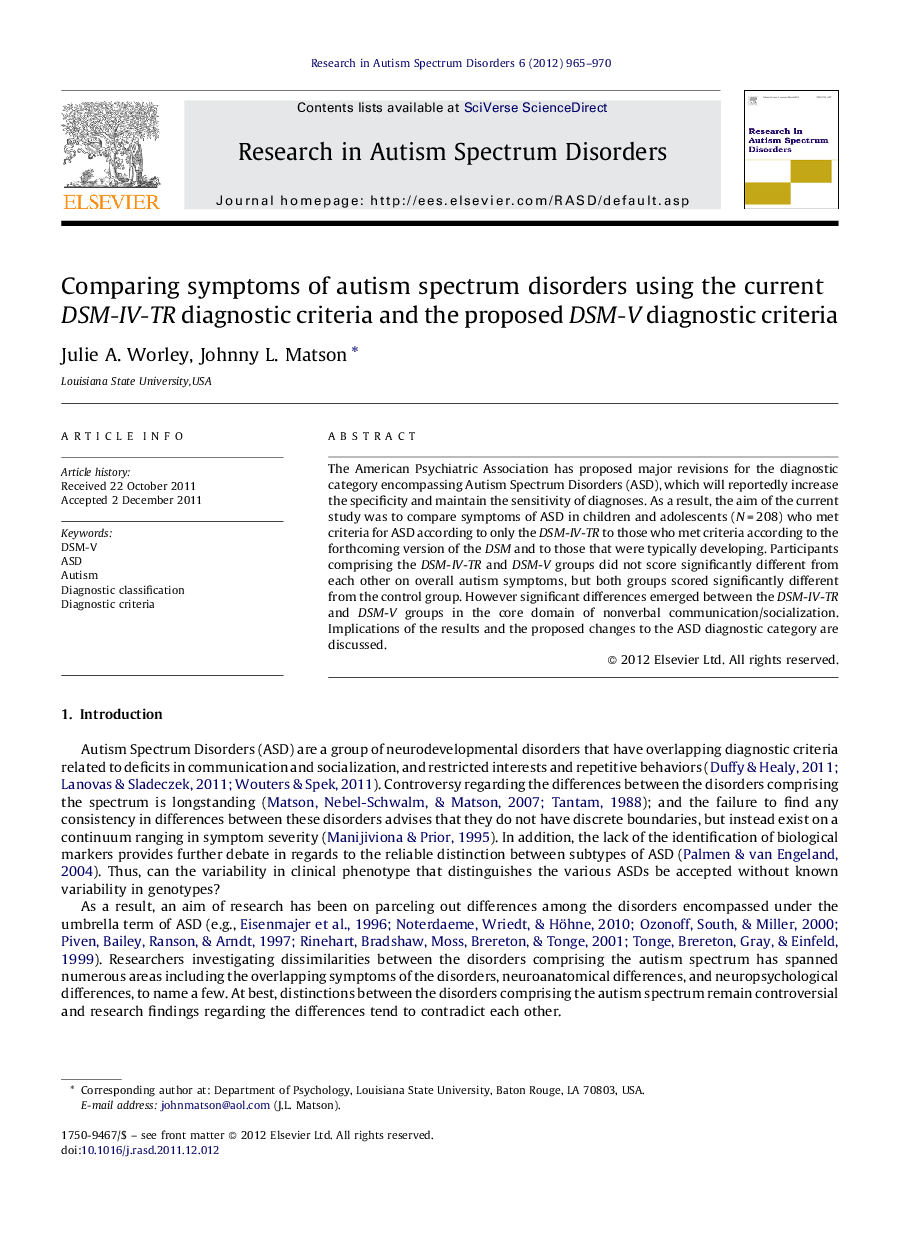| کد مقاله | کد نشریه | سال انتشار | مقاله انگلیسی | نسخه تمام متن |
|---|---|---|---|---|
| 370720 | 621881 | 2012 | 6 صفحه PDF | دانلود رایگان |

The American Psychiatric Association has proposed major revisions for the diagnostic category encompassing Autism Spectrum Disorders (ASD), which will reportedly increase the specificity and maintain the sensitivity of diagnoses. As a result, the aim of the current study was to compare symptoms of ASD in children and adolescents (N = 208) who met criteria for ASD according to only the DSM-IV-TR to those who met criteria according to the forthcoming version of the DSM and to those that were typically developing. Participants comprising the DSM-IV-TR and DSM-V groups did not score significantly different from each other on overall autism symptoms, but both groups scored significantly different from the control group. However significant differences emerged between the DSM-IV-TR and DSM-V groups in the core domain of nonverbal communication/socialization. Implications of the results and the proposed changes to the ASD diagnostic category are discussed.
► Major changes in how autism is defined and diagnosed will occur in DSM-V.
► This study provides an empirical comparison of DSM-IV-TR and DSM-V criteria.
► Children and adolescents on the autism spectrum decreased by 32.3% of DSM-V criteria.
Journal: Research in Autism Spectrum Disorders - Volume 6, Issue 2, April–June 2012, Pages 965–970